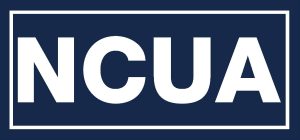APR FAQ
Federal law requires lenders to provide APR information to applicants in a document known as the “Loan Estimate”. The following are some of the most frequently asked questions about the APR calculation, and their answers. For more information regarding this mortgage topic, or others, you may contact us.
What is a Loan Estimate, and why do I receive it?
The Loan Estimate disclosure provides information that Federal law requires us to give applicants. The purpose of the estimate is to give applicants information about their loan and help them determine the true cost of credit.
What is the ANNUAL PERCENTAGE RATE?
The Annual Percentage Rate, or APR, is the cost of credit expressed in terms of an annual rate. The APR takes into effect the interest rate paid over the life of the loan, required private mortgage insurance (PMI) paid during the term of the loan, and the amount of prepaid finance charges paid at or before loan closing. The APR is often higher than the interest rate because of prepaid finance charges and PMI. This can be used as a great tool when shopping for your mortgage, as it shows you how much each lender is charging to complete the loan.
What is the AMOUNT FINANCED?
The amount financed is the principal loan amount minus prepaid finance charges. This piece of information is used to show the actual amount of credit that is being made available to a borrower, for a loan.
Does this mean an applicant will get a lower mortgage than they applied for?
No. If the loan is approved for the amount they applied for, that’s how much will be credited towards their home purchase or refinance at settlement.
Why is the ANNUAL PERCENTAGE RATE different from the rate the applicant applied for? Why is the AMOUNT FINANCED different?
The AMOUNT FINANCED is different because it represents a net figure. If someone applied for a mortgage of $100,000 and their prepaid finance charges total $3,000, the amount financed would be shown as $97,000, or $100,000 minus $3,000.
The A.P.R. is computed from this lower figure. Based on what your proposed payments would be for a $100,000 loan with an interest rate of 9.5% the payments would be $840.85 (principal and interest) on a loan with a thirty year term. Since the A.P.R. is based on the net amount financed ($97,000), rather than the actual mortgage amount, the A.P.R. is higher than the interest rate and would be 9.855% in this example. If the applicant’s loan were approved he would still receive a $100,000 loan for thirty years with monthly payments of $840.85 at 9.5% note rate.
What is the FINANCE CHARGE?
The finance charge is the cost of credit expressed as a dollar amount. It includes any charge (including interest) paid by the borrower as a condition of the loan (unless excluded by regulation).
What is the TOTAL OF PAYMENTS?
This figure represents what the applicant will have paid, including principal, interest, prepaid finance charges, and mortgage insurance if they make minimum required payments for the life of the loan. This figure is disclosed on the Disclosure Statement and is estimated on any adjustable-rate transaction.
The statement says that if the loan is paid off early, the borrower will not be entitled to a refund of the finance charge. What does this mean?
This means that they will be charged interest for the period of time in which they used the money loaned to them. Your prepaid finance charges are not refundable. Neither is any interest that has been paid. If the applicant pays the loan off early they will generally not have to pay the full amount of “finance charges” on the disclosure. This charge represents the full amount the loan would cost them if the minimum required payments were made each month through the life of the loan.
Why must applicants sign the initial Disclosure Statement?
The lender is required, by law, to provide the information on this statement to them in a timely manner. Their signature merely means they have received this information, but it does not obligate the applicant to use the lender or lock-in an interest rate/loan program.








